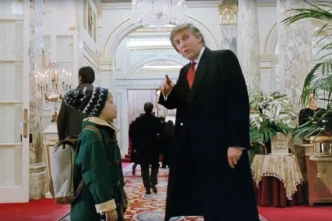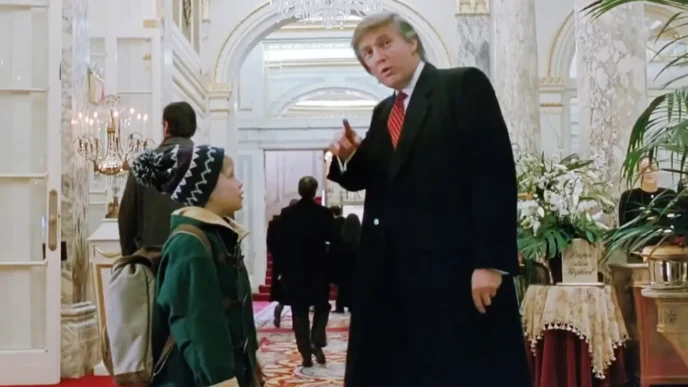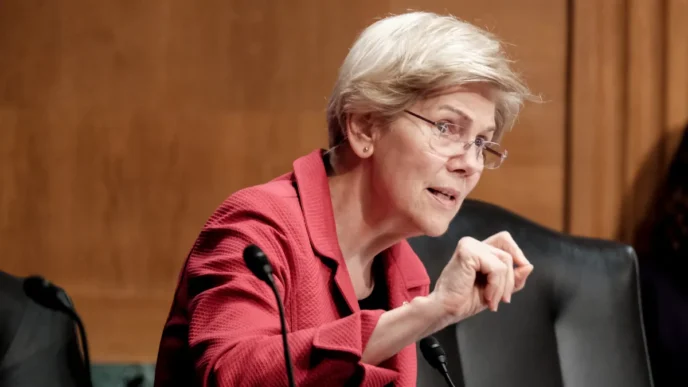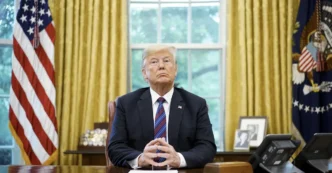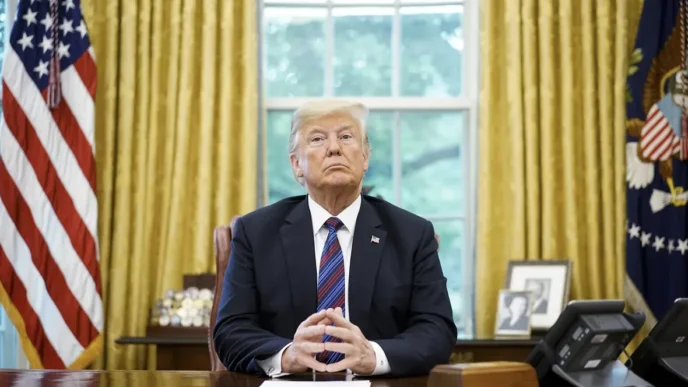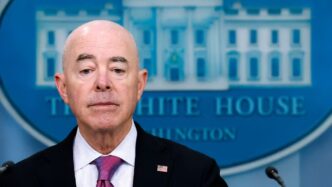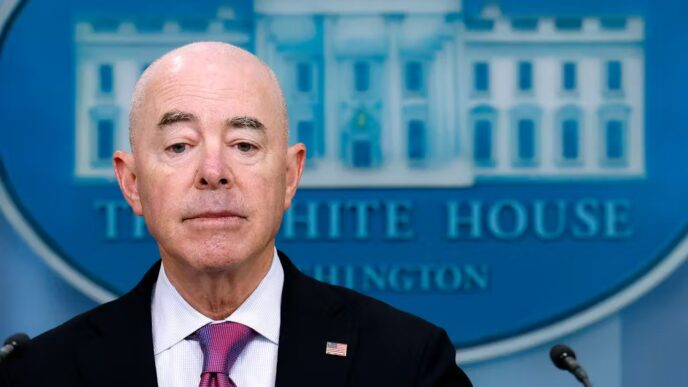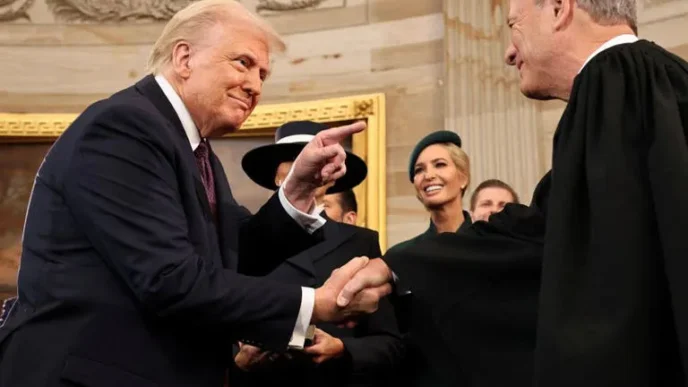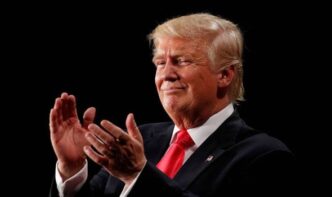
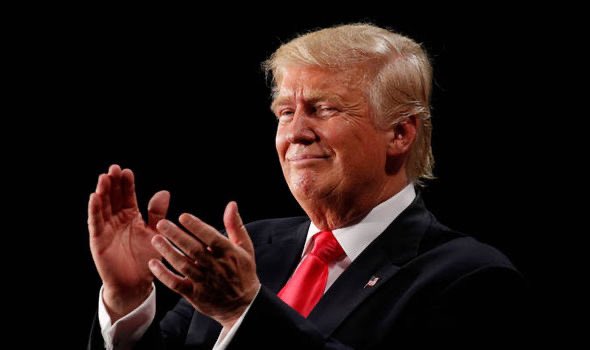
In a bold economic proposal, President Donald Trump has suggested that revenue generated from tariffs could potentially become substantial enough to replace income taxes entirely. The statement, made during a recent public address, has sparked widespread discussion among economists, policymakers, and the public about the feasibility and implications of such a policy shift.
Trump’s remarks center on leveraging tariffs—taxes imposed on imported goods—to generate significant government revenue. He argues that by imposing high tariffs on foreign goods, particularly from countries like China, the U.S. could amass enough funds to reduce or even eliminate the need for federal income taxes. “We’re going to make so much money from tariffs, it could be a game-changer,” Trump stated, emphasizing the potential for tariffs to reshape the U.S. tax system.
The idea aligns with Trump’s long-standing advocacy for protectionist trade policies, which he claims would bolster domestic industries, create jobs, and reduce reliance on foreign imports. By taxing imports heavily, the administration believes it could incentivize American manufacturing while simultaneously funding government operations.
Historically, tariffs were a primary source of federal revenue in the United States before the introduction of the modern income tax in 1913. In the 19th century, duties on imported goods accounted for a significant portion of government funds, used to finance infrastructure, defense, and other public expenditures. Trump’s proposal harkens back to this era, suggesting a return to a tariff-based revenue model.
However, the economic landscape has changed dramatically since then. The U.S. economy is now deeply integrated into global trade networks, and income taxes—both individual and corporate—form the backbone of federal revenue, generating trillions of dollars annually. In 2024, the federal government collected approximately $4.4 trillion in total revenue, with individual income taxes accounting for nearly half of that amount, according to the Congressional Budget Office.
While Trump’s proposal is ambitious, economists are divided on its practicality. To replace income taxes, tariffs would need to generate an extraordinary amount of revenue without severely disrupting the economy. Several key factors come into play:
- Scale of Revenue Needed: The federal government’s annual budget exceeds $6 trillion, with income taxes covering a significant portion. To replace this revenue, tariffs would need to be imposed at unprecedented rates or applied to a vast array of goods, potentially raising the cost of imports dramatically.
- Impact on Consumers: Higher tariffs typically lead to increased prices for imported goods, which could raise the cost of living for American consumers. Everyday items, from electronics to clothing, could become more expensive, potentially offsetting any tax relief from eliminating income taxes.
- Trade Retaliation: Aggressive tariff policies could provoke retaliatory measures from trading partners, as seen during Trump’s first term when China and other nations imposed counter-tariffs on U.S. exports like agriculture and manufacturing goods. Such trade wars could harm American businesses and farmers.
- Global Supply Chains: Modern supply chains are highly globalized, with many U.S. companies relying on imported components. High tariffs could disrupt these networks, leading to production delays and higher costs for domestic manufacturers.
Some economists argue that tariffs could generate substantial revenue without replacing income taxes entirely. For example, a 10% universal tariff on all imports could raise hundreds of billions of dollars annually, based on current U.S. import volumes of approximately $3 trillion per year. However, scaling tariffs to fully replace income taxes would likely require rates far higher than those proposed, potentially triggering economic fallout.
Trump’s proposal has elicited a range of responses. Supporters, particularly within his base, view it as a bold step toward simplifying the tax system and prioritizing American workers. “No income taxes sounds like a dream come true,” said one supporter on X, reflecting enthusiasm for the idea among some voters.
Critics, however, warn of the risks. Democratic lawmakers and progressive economists argue that replacing income taxes with tariffs would disproportionately burden low- and middle-income households, who spend a larger share of their income on consumer goods. “This is a regressive tax dressed up as a tax cut,” said one congressional Democrat, highlighting the potential inequity of the policy.
Business groups, including the U.S. Chamber of Commerce, have expressed skepticism, citing the potential for higher costs and trade disruptions. Meanwhile, some fiscal conservatives support the idea in principle but question its feasibility without significant spending cuts to accompany the loss of income tax revenue.
For Trump’s vision to become reality, several hurdles must be addressed. First, the administration would need to design a tariff structure capable of generating trillions in revenue without crippling economic growth. This would likely involve targeting high-value imports while minimizing impacts on essential goods.
Second, the policy would require congressional approval, a challenging prospect given the divided nature of Congress. Lawmakers would need to navigate competing interests, from consumer advocacy groups to industries reliant on global trade.
Finally, the administration would need to prepare for international pushback. Major trading partners, particularly the European Union and China, are likely to respond with diplomatic and economic measures to counter U.S. tariffs, potentially escalating into broader trade conflicts.
President Trump’s suggestion that tariffs could replace income taxes represents a radical departure from the current U.S. tax system. While the idea taps into populist sentiments and a desire to protect American industries, its implementation would face significant economic, political, and international challenges. As the debate unfolds, policymakers and the public will need to weigh the potential benefits of reduced income taxes against the risks of higher consumer prices, trade disputes, and economic uncertainty.
For now, the proposal remains a provocative talking point, emblematic of Trump’s unconventional approach to economic policy. Whether it evolves into actionable legislation or remains a rhetorical flourish will depend on the administration’s ability to navigate the complex realities of global trade and domestic fiscal policy.
